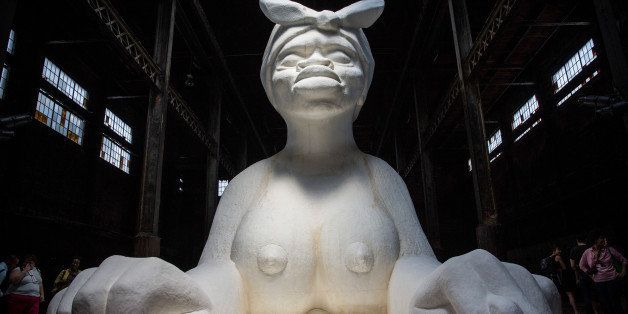
Kara Walker, the black artist who is known, loved and sometimes begrudged for making slavery-inspired silhouettes, hasn’t said an awful lot in public about about her latest work, “A Subtlety: Or the Marvelous Sugar Baby.” Instead, the giant Sphinx made of white sugar with the head and backside of a mammy and the brown babies fashioned out of unrefined sugar speak volumes.”I don’t really see it as just about race,”Walker told Audie Cornish at NPR in May. “I mean, I think that my work is about trying to get a grasp on history.”
The history that Walker is trying to excavate came hurtling into the present yesterday as throngs of people of color—including many black women—came to the abandoned Domino Sugar factory in Brooklyn to view the exhibit together. Known as “We Are Here,” the event was billed as “a chance for [the exhibit’s] thousands of daily visitors to reflect on history before the old factory space is replaced by high rises.” More than a thousand users RSVP’d on Facebook and participants wore black stickers with “We Are Here” scrawled across them in white letters. People were handed pamphlets with a timeline dating back to 1884 and they were invited to share their reflections about the exhibit on a wall near its exit.